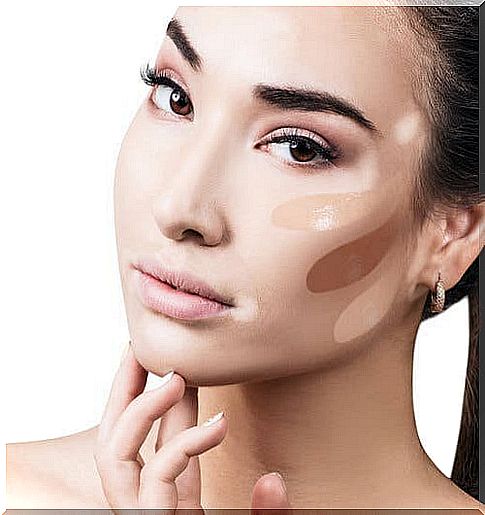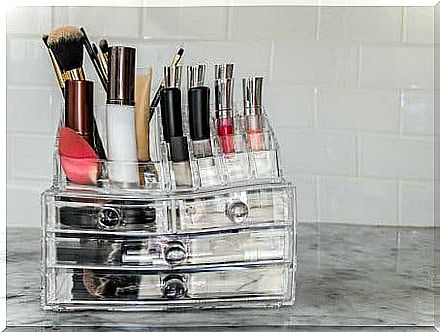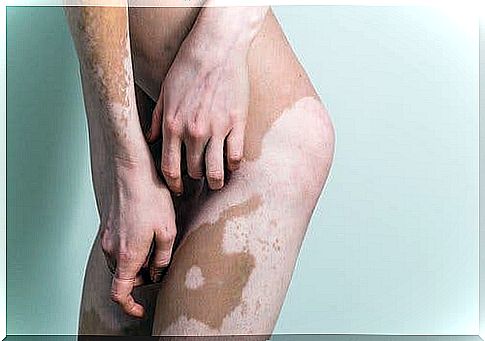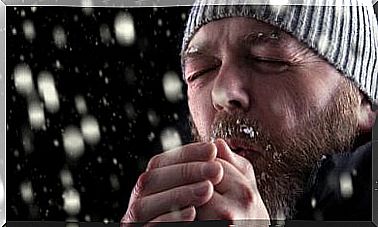Corrective Make-up In Dermatology
Corrective make-up can be useful in several ways. On the one hand, some diseases have unpleasant consequences for the skin. Such make-up can be used to alleviate this, for example. But these products do not only have an aesthetic benefit. They can also have therapeutic purposes.

Corrective make-up was specially developed in dermatology and is primarily intended to hide certain unsightly areas of the skin. Because in this way you can restore the good appearance of those skin areas that are affected by certain skin diseases or other injuries. This type of makeup is useful for:
- a lessening of the effects of burns on the skin
- the improvement of aesthetic dermatology or plastic surgery treatments
- a minimization of the side effects of cancer treatments
In addition, corrective makeup also has great psychological benefits. Because it makes the skin look good. And as a result, your own appearance is perceived as more advantageous. This in turn contributes to an improvement in self-esteem and the quality of life of those affected.
What are the characteristics of corrective makeup?
This type of makeup, as mentioned earlier, has been specially designed. Its main purpose is to correct or conceal imperfections in the skin. Corrective makeup therefore has a number of special features. These include the following:
- High coverage
- Natural looking result: quick and easy application
- Dermatologically Safe: Appropriate clinical tests are carried out to ensure that the products are hypoallergenic and non-comedogenic
- Reliable hold on the skin
- Water and sweat resistant
- Perfume free
- Adaptable to use on the face and other parts of the body
- Easy to remove
Corrective makeup: do you know the basics?
The principle of complementary colors shown in the chromatic color wheel is used here. In this color wheel there is an opposite color for every color. F ügt to one color to her opposite complementary color, it weakens them off. For example, green weakens the color red and yellow has the same effect on purple.
This principle makes it possible to conceal reddish or purple irregularities of the skin with color correctors of the opposite colors. As a result , you usually only need to use a small amount of foundation with this type of make-up.

Therapeutic use of make-up in dermatology
Corrective makeup offers numerous and varied uses. Some of the most common are these:
- Covering up minor imperfections: dark circles, spots or tattoos
- Skin diseases: acne, rosacea or lupus
- Hyper- or hypopigmentation: lentigines, melasma or vitiligo
- Vascular changes: flush, couperose or angioma
- After interventions in the field of aesthetic dermatology or plastic surgery: chemical peeling, dermabrasion, laser treatment or the use of injectable fillers in the field of facial aesthetics.
- Concealment of burns and scars.
Corrective makeup is used in addition to normal makeup for patients undergoing cancer treatment. In these cases it is sometimes necessary to strengthen the eyebrows a little with the make-up, or to create gaps with the make-up.
To do this, you have to follow the line of the natural eyebrow with small lines when applying. However, if there is partial or complete alopecia, you can use 3 reference points to completely reapply the eyebrows to the face.
The eyelashes are also often affected by cancer therapy. Then the patients either have few or sometimes no eyelashes at all. In this case, corrective make-up can also be used. Then use an eyebrow pencil to apply some color to the roots of the upper lashes. This ensures that the remaining eyelashes look thicker, or you can soften the impression of the missing eyelashes.

Corrective makeup for cancer patients
Corrective make-up is of particular importance in the field of dermatology for patients undergoing oncological treatment. Because with chemotherapy and other cancer-specific treatments, undesirable effects on the facial skin are a very common consequence.
It is important that those affected are comfortable with their appearance. Because that increases your self-esteem and self-confidence. Therefore, makeup helps them to approach the treatments necessary for their illness with a more positive attitude. And not only that: it also allows them to improve their personal and social relationships.
In addition, corrective makeup helps alleviate the most common facial skin problems associated with cancer treatments. These include severe dryness of the skin and signs of fatigue. Spots and hyperpigmentation or redness are also common consequences. Likewise, acne-like skin rashes and partial or complete hair loss on eyebrows and eyelashes.
Gentle cleansing should be done before applying makeup. And this should only be done with products that have been proven to be effective and tolerable. Cleansing milk or cleansing oils are particularly suitable for this.
An adequate supply of moisture is essential for the face and especially for the skin around the eyes. Because dry skin is one of the most common side effects of chemotherapy. It is important to give preference to hypoallergenic products with a high content of emollients.
It is also advisable to apply a moisturizing mask once or twice a week. And of course, those affected should never lack adequate sun protection. Because oncological treatments increase the skin’s sensitivity to solar radiation. You should expose yourself to the sun as little as possible.
Conclusion
Corrective makeup can be a good tool. Especially in the case of people who have certain skin conditions or who are undergoing cancer treatment. Such makeup can help make those affected feel more comfortable both physically and emotionally. It is important to understand that in addition to their aesthetic uses, these products also have medical uses.









